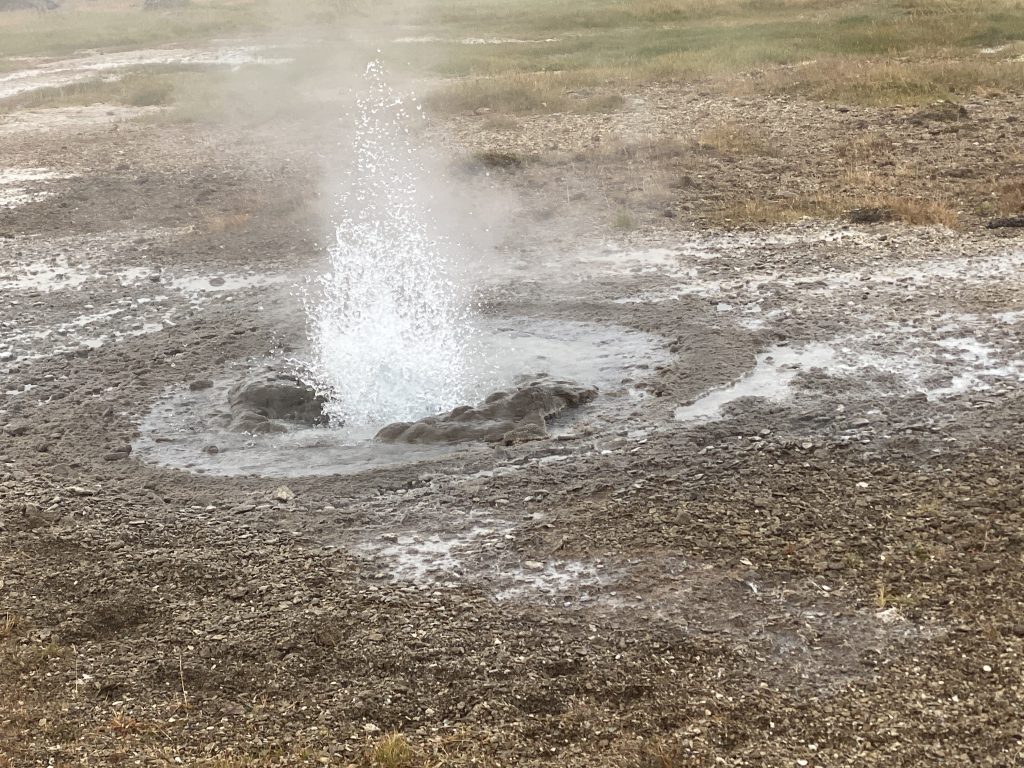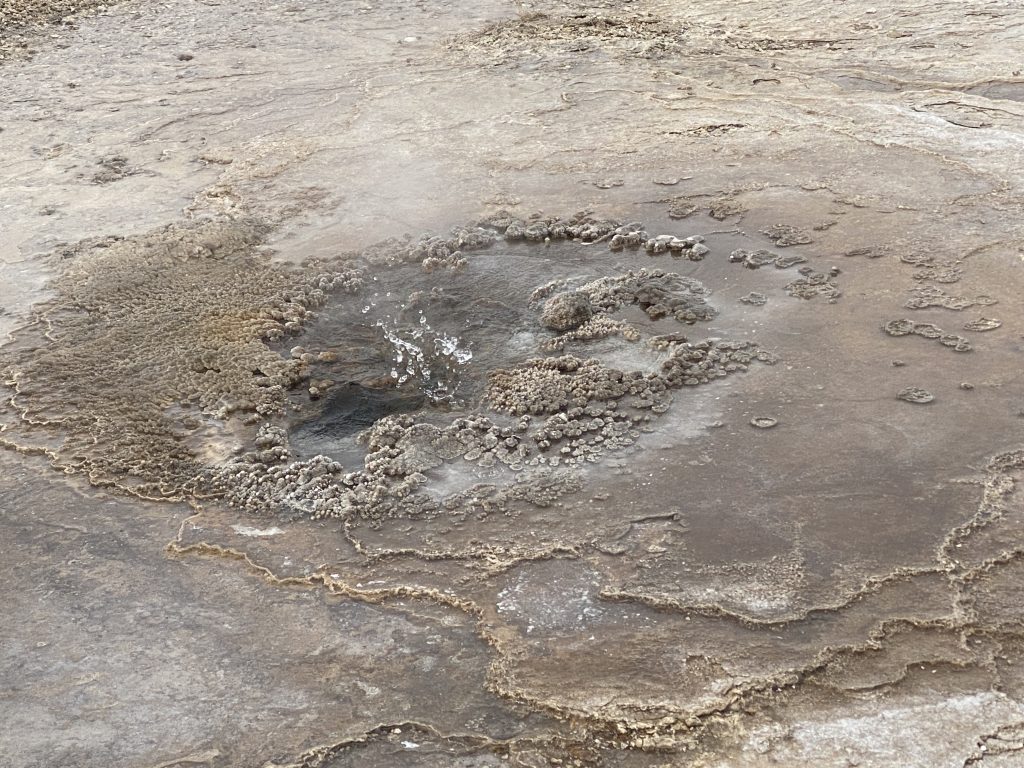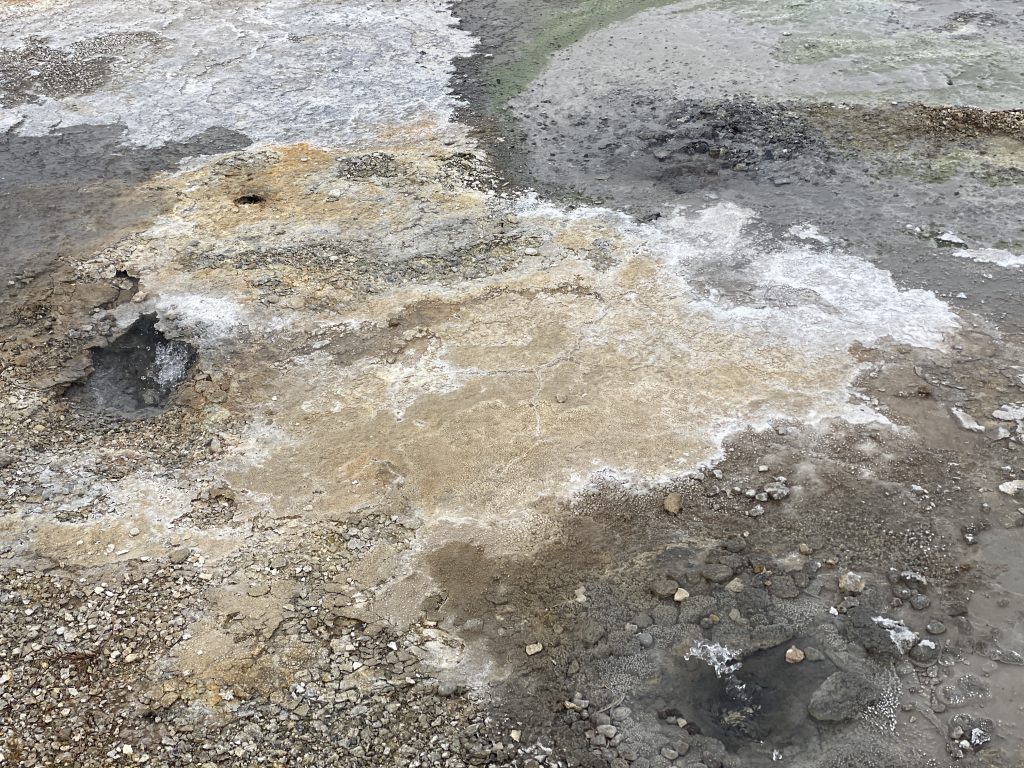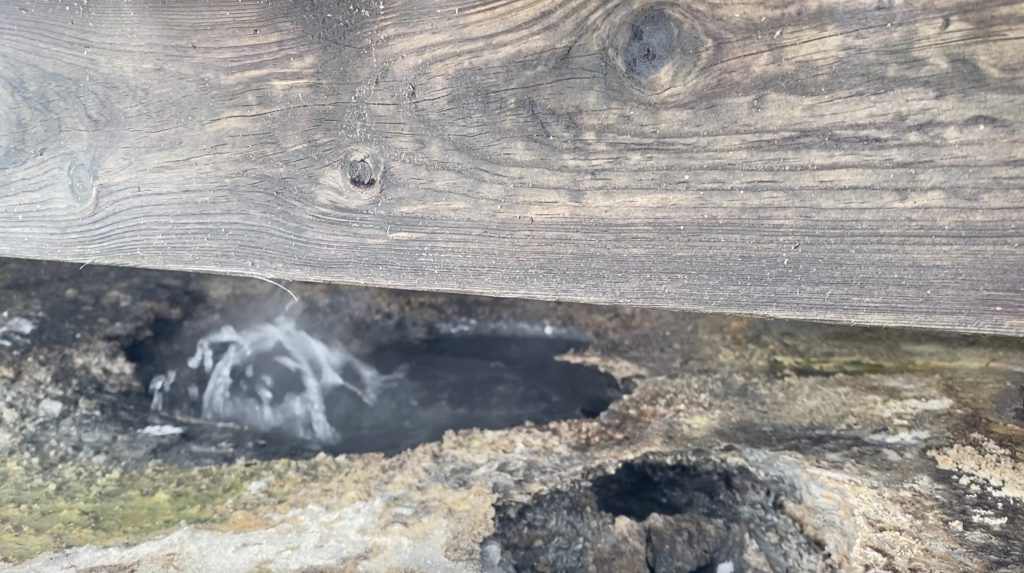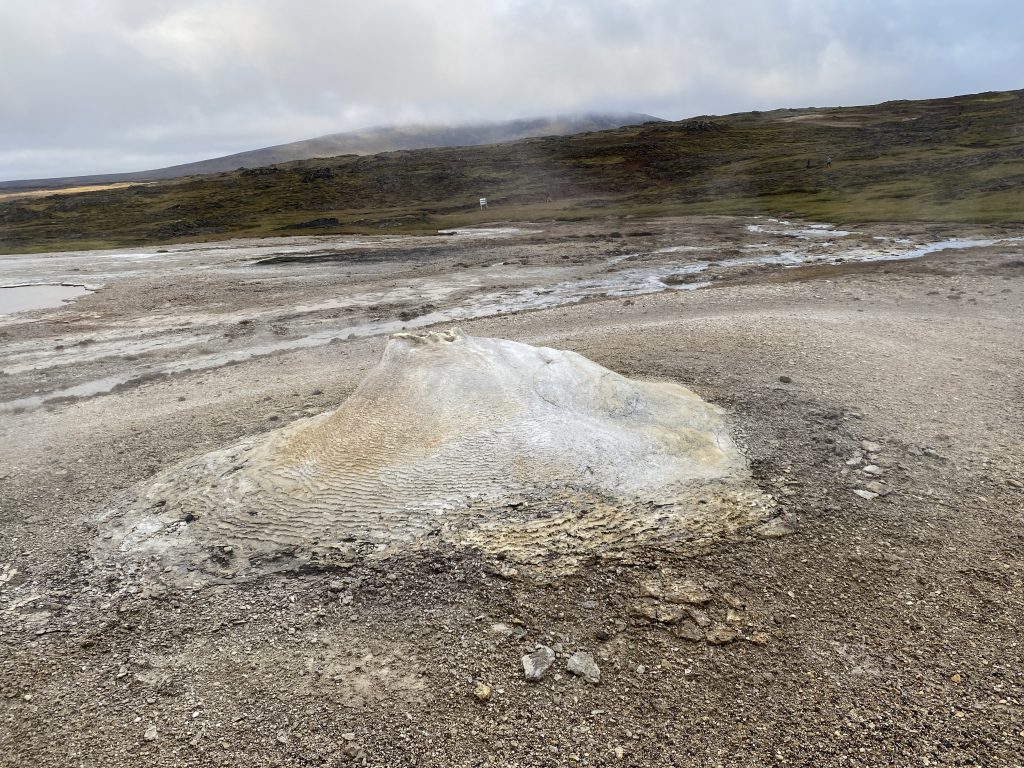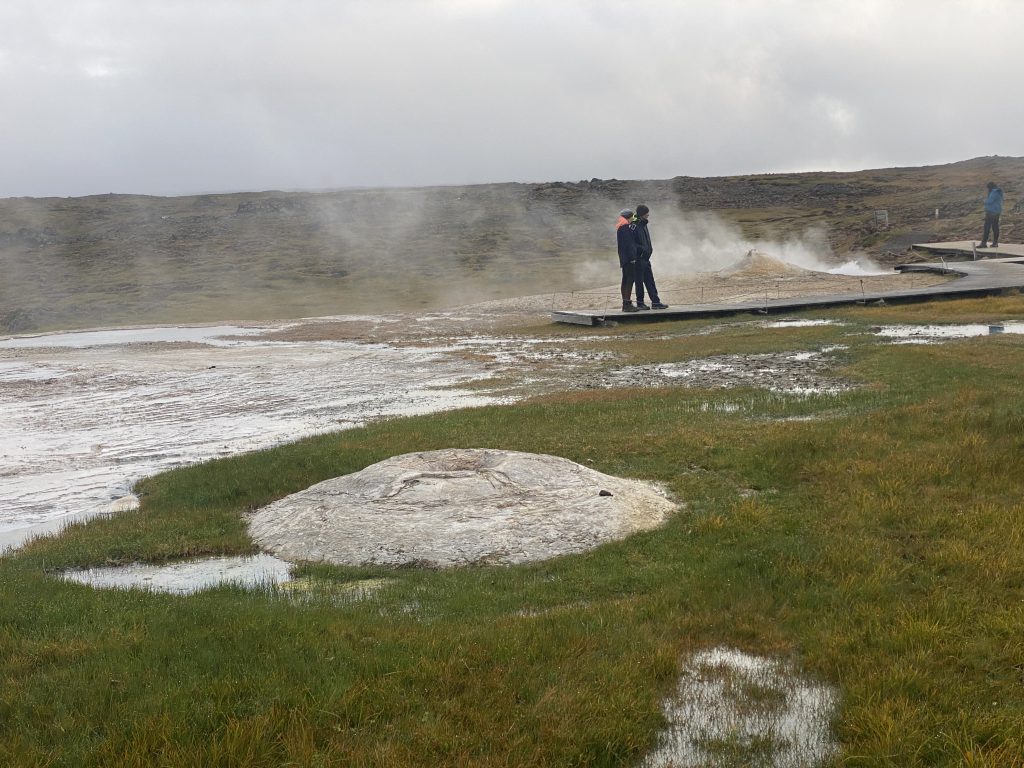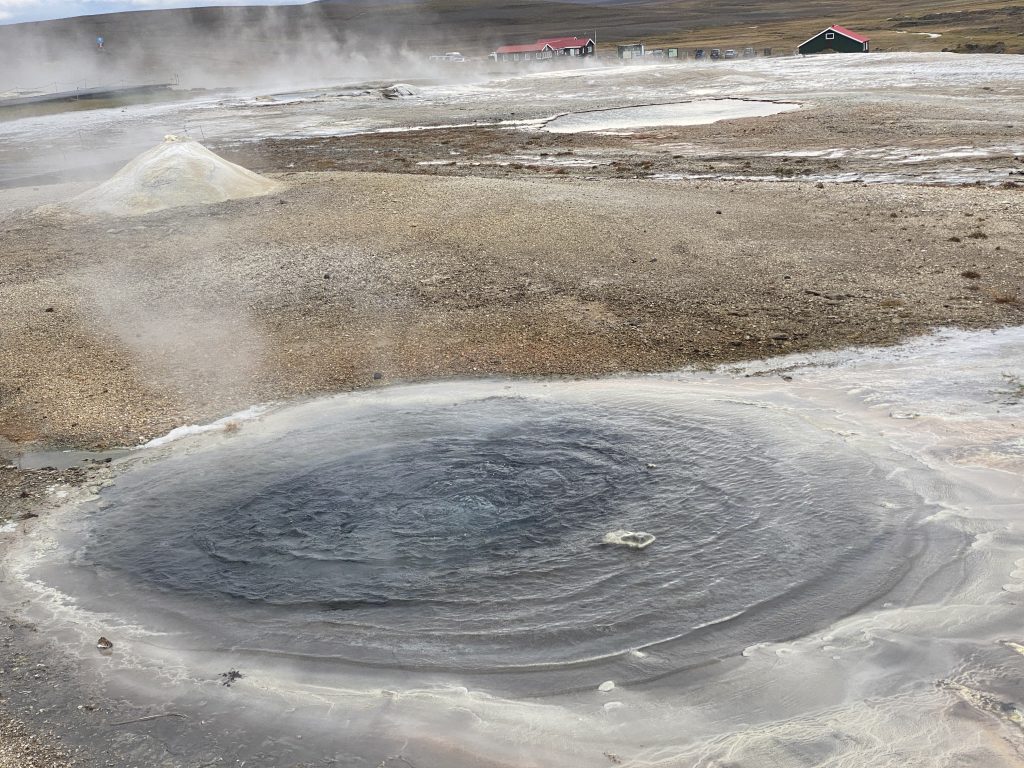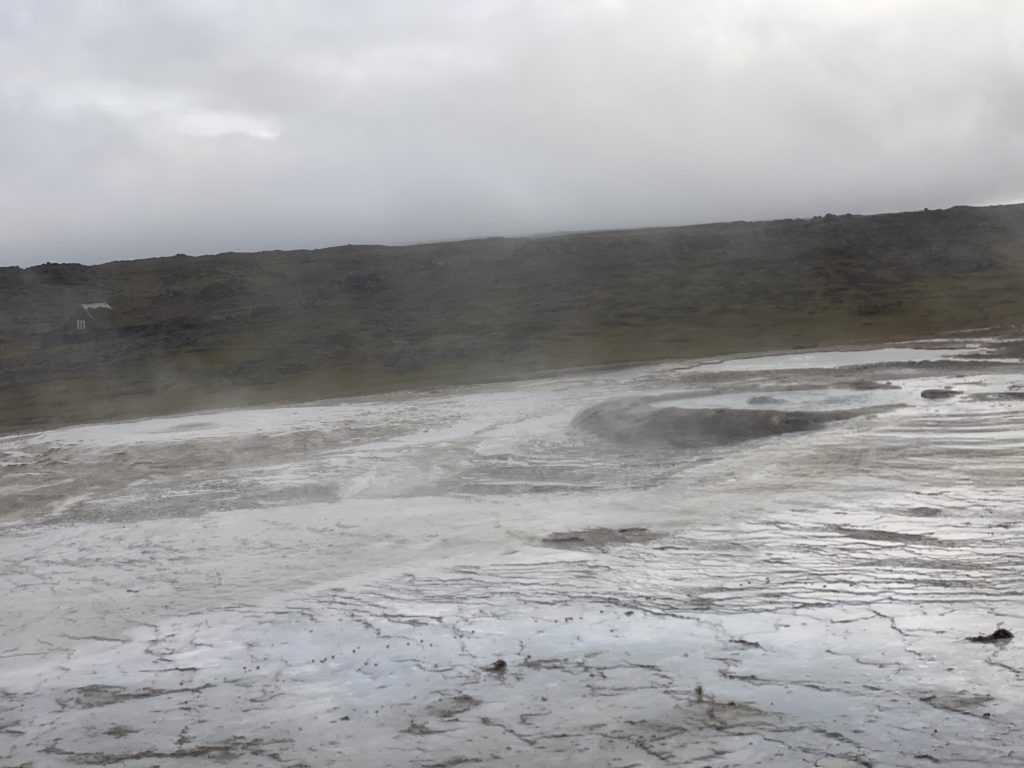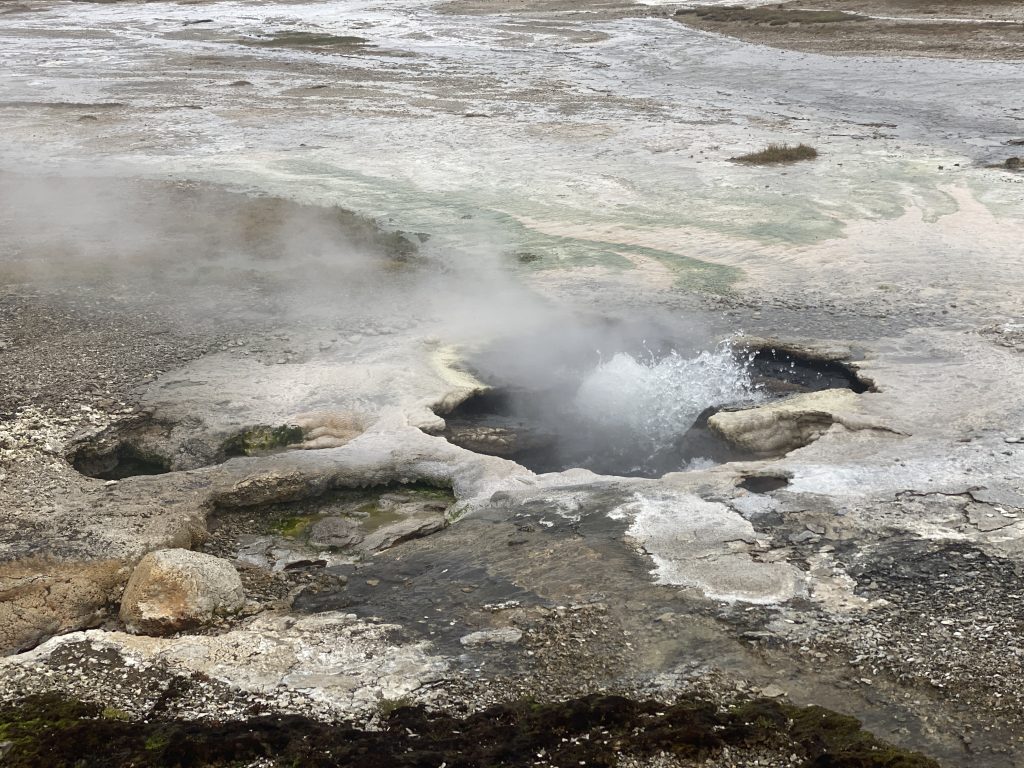Update: Added some details on H-208h, an erupting feature near Öskarhóll.
Spent the day observing the thermal activity at Hveravellir. This is an area for those who like little sputs and spouters. As mentioned yesterday, there are a lot of little features here which show true eruptive activity. Every hole seems to sputter. Many seem to be perpetual spouters, but there were also a number where the activity would cease and restart, making them true geysers.
There was one geyser that could be timed. This is the small geyser Gjósandi, east of the large pool Heimilishver (Bóluhver). This geyser appears to be pretty regular, with intervals of about 40 seconds and durations of from 8 to 12 seconds. Most bursts were only 1.5 meters high, but there were some well over eye level, putting them around 2.5 meters.
Heimilishver (Bóluhver) also shows eruptive bursts, but most of the time this large pool has a heavy, pulsating overflow over much of its rim. On occasion, there would be bursts up to 1/2 meter from it. It looks like it is trying to have a larger eruption, and never quite succeeding. Between it and the walkway there is a large hole that appears to be a collapse in the terraces surrounding the vent. This vent also splashed, but did not seem to be related to its neighbor.
Down the walkway a bit are a series of small sputtering holes, including several under the walkway. Again, these features seem to die down on occasion.
The start of activity at Rauðihver seems to be recent. Surrounding it are large wash zones with dead and dying grass. Some of the layers of the formation have been ripped up and pulverized. Rauðihver is fascinating to watch, as the whole pool pulsates over the vent, while thumps can be heard from the pool just before the larger bursts. These bursts of murky, gray water can be thrown as much as two meters high, and come along every minute or two.
There are a couple of well defined cones-- Öskarhóll and Fagrihver. Öskarhóll is the larger cone, which at the top has a weak fumarole. A century ago, it was a strong, noisy fumarole. Based on the little terraces down the northeast side, I would suppose that at some time in its past it gently overflowed for a long time. The second cone, Fagrihver, is completely dead, with no steam despite being a cool, humid day.
To the west of Öskarhóll is a pool for which I can't find any previous mention. It is a well defined pool about three meters across. It splashes continuously up to two meters high, and doesn't look all that recent.
Update: Further research shows this as feature H-208h. A few years ago it was a smaller collapse feature, which turned into a muddy splashing hole. Its gotten larger and clearer based on various online videos I've found.
To the east are the pools Grænihver and Bláhver. The latter is a murky pool, while the former is a larger pool that overflows heavily and occasionally splashes. Beyond it and down the slope are a series of smaller features, all of which were splashing and sputtering. Nearest Grænihver is Bræðrahver, which is a broad, shallow pool with a small vent in the center. This feature frequently has a thin jet of water to about a meter. (It reminded me in appearance and eruption activity of #812 at Orakeikorako.)
All these features have developed a wide sinter platform. In the middle of this is another spouter with a ragged crater surrounded by a yellowish-white sinter. To the side is a brown vent without activity, but with cauliflower formatins and beading as if it was active not long ago.
The lowest spouter, Nýihver, erupts to a height of about one meter, and is used as the hot water intake for the hot pool used for bathing. The water comes into the pool at around 180°F, and has to be mixed with cold water to make it useable, but there's still a thin layer on top (around 115°F) that requires hand mixing.

